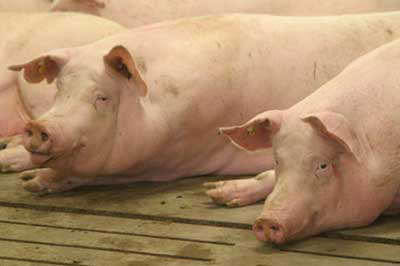Forgotten corner: Seasonal Infertility headache

In the northern hemisphere, Spring is just round the corner after a punitive winter weatherwise. The first line of defence against the complicated and persistent disorder of Summer and/or Autumn Infertility is to increase gilt target matings in spring by 10-15% (dependent on how hard you have been hit in previous years) to compensate for the breeding failures which are likely to occur much later in the year.
But there is a second one to think about this early on in the calendar year and it is the probable effect of bright light in Spring. “Bright light – surely not?” I hear you say, Yes – all the advice has been about too dim lighting and attempting to counteract the damaging (but from the sows point of view the protective) effect of falling daylight hours once midsummer moves towards autumn – so that in the wild she does not farrow in the depth of winter. But we want her to farrow all the year round.
I live in one of the most concentrated areas of outdoor breeding in Europe and note that those sudden very bright days in late March and all through April can elevate summer infertility in our outdoor herds more than those people who keep sows indoors where lighting is either dimmer in springtime or can be controlled. The scientists can explain why. The wiser `outdoorers` now tend to erect cheap shaded structures in outdoor dry-sow paddocks really early on in March. But as well as bright spring sunshine the winds can be cold, so some protection from the direction of an icy blast is needed as sows just won’t use them, although a few sow nuts scattered on the lightly-bedded floor can help.
Is it worth it? One authority is on record that summer infertility costs our industry 3p/kg each year. For 40 sows per paddock producing well over 90,000kg liveweight each year this is near to 3500 euros, or 88 euros/sow.
Putting up early springtime shades – useful too in really hot summer conditions – will help reduce this cost, but they need to be put up much sooner than most do.
Many breeders, heeding the ban on dry sow stalls, are running yards rather than a fully-outdoor unit, and I see many dry sows enjoying relaxation in areas reached by the spring sunshine. Well, why not! Using my photo light meter I`m recording light levels of over 600 lumens over the pineal gland – which is fine for sows and gilts coming into season but very likely to be deleterious for sows in gestation carrying a very different set of hormones. When ‘Galebreaker’ shades were used the light intensity fell by 50%. Another intriguing area where we could with more research to add to those unknowns I listed last month.







